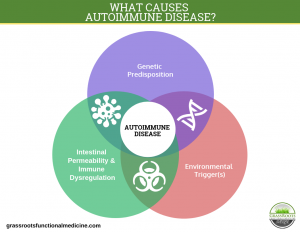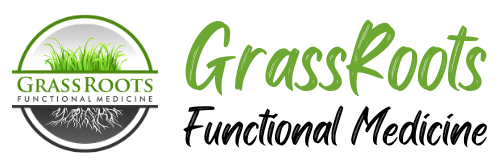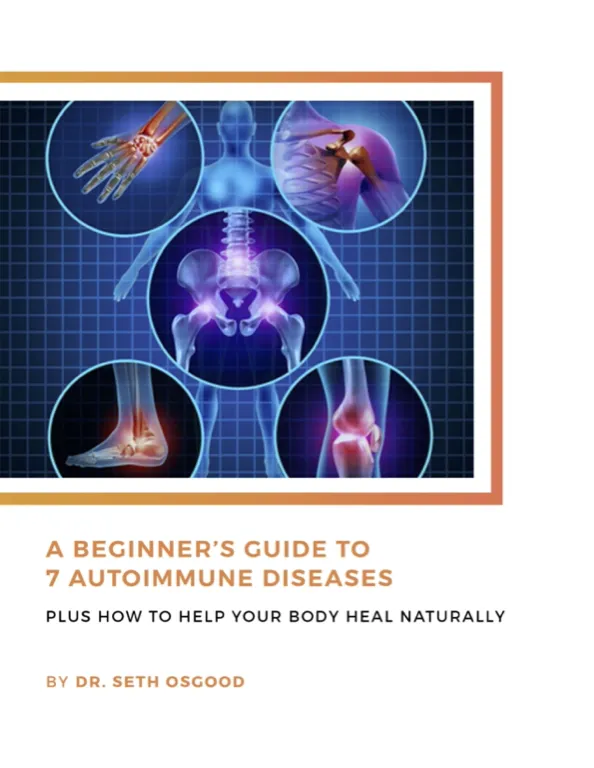Background and Significance:
It is an unfortunate truth in today’s society that most people are impacted in one way or another by the effects of an autoimmune condition. Whether it is you, or a close friend or family member who has received a diagnosis, autoimmunity has an expanding reach with growing devastation. According to the American Autoimmune Related Diseases Association (AARDA), there are approximately 50 million Americans who currently suffer from autoimmunity, and it is listed as one of the top ten leading causes of death in female children and adults up to 64 years of age. To date, researchers have identified nearly 100 different autoimmune conditions and suspect at least 40 other conditions to have an autoimmune component1. These numbers have increased exponentially over the last twenty years. In 1997, 24 autoimmune diseases had been identified affecting an estimated nine million people within the United States2.
What is Autoimmunity?
I am always blown away when I stop and think about the complexity of our Creator’s design of the human body which can be seen by observing the immune system. The immune system was originally designed with the primary responsibility of protecting the body against potential threats. These threats could be viruses, bacteria, fungus, parasites, or a host of other elements with a potential to inflict harm. People with healthy immune systems have the impressive ability to distinguish problematic pathogens that should be destroyed, from healthy cells and tissues that are meant to be preserved. When the immune system becomes overwhelmed or weakened for various reasons (toxins, stress, inflammation, chronic infections, etc.), it can no longer distinguish the body’s healthy cells from harmful invaders. As a result, it starts to attack everything in a heroic effort to preserve function. At this point, when the immune system begins to attack itself, this is when autoimmunity occurs.
What Causes Autoimmune Disease?
A leading theory about autoimmunity suggests that there are three primary elements necessary for the development of an autoimmune condition: genetic predisposition, impaired intestinal permeability (leaky gut), and environmental triggers3. We know that genetics is an important piece of autoimmunity and these conditions frequently run in families. Fortunately, we also know that just because you are genetically susceptible, this doesn’t guarantee you are going to have a problem. An analogy I always find helpful when understanding the influence of genetics is, “Genetics load the gun, and the environment pulls the trigger.” What this means is that although genetics may increase your risk for having an autoimmune condition, the environmental factors dictate how one’s genes are expressed. Cleaning up the environment and lifestyle can drastically reduce your risk of having complications, even if your genetics are working against you. Parents, remember this for your children. If you are diagnosed with an autoimmune condition and have a child, especially a daughter, don’t just cross your fingers and hope for the best regarding their development of autoimmunity. Be proactive and make sure they are taking as many preventative measures as possible to reduce their chances for experiencing immune dysfunction in the years to come.
The second element required for the development of autoimmunity is impaired intestinal permeability or leaky gut. For those who are not familiar with leaky gut, there is only one single layer of cells (enterocytes) that separates the contents of the digestive tract from the blood stream. These enterocytes are linked together forming tight junctions between the individual cells. This allows for only the smallest of digested proteins and nutrients to pass through to the blood stream for distribution throughout the body. At the same time, this thin layer of cells serve as a protective barrier that prevents problematic particles, toxins, and pathogens that are digested from entering into systemic circulation. When this barrier becomes damaged, which can occur for a multitude of reasons (stress, toxins, food allergies/reactions, hormone imbalances, medications, antibiotics, infections, etc.), the tight junctions that once served as a barrier, now become loose and “leaky.” This allows foreign substances once warded off by the intact digestive cells, to enter the systemic circulation. In an attempt to defend the body against these problematic invaders, the immune system goes on the offensive triggering wide spread inflammation.

The third and final ingredient for autoimmunity is the influence of environmental triggers. It is essential for all of us to recognize and understand the recent changes we have seen in our environment and the impact these changes are having on our health. In the last 20 years, we saw the number of autoimmune conditions increase from 24 to over 100, with the number of Americans affected skyrocketing from nine million to an estimated 50 million people. For all of the time humans have roamed this earth, what has changed in the past several decades that has led to such drastic immune dysfunction? The only logical answer in my mind is our environment. In the United States, there are over 80,000 chemicals currently registered with the National Toxicology Program (NTP)4. The impact that these chemicals have on our health is largely unknown. Our bodies that once endured intense physical labor on a daily basis while working outdoors in the fresh air and grounded to earth are now cooped up and sedentary with little to no exposure to sunlight. The majority of food is genetically modified, processed, and inflammatory, depleted of the essential nutrients our bodies require. Not to mention the fact that it seems as though being in a state of high stress and sleep deprivation is the new normal! All of these lifestyle factors and more, overwhelm the immune system and set the stage for dysfunction. As incredible and complex as the immune system is, it is only so strong and can only tolerate so much. When a combination of these factors come together with genetic predisposition and a leaky gut, it is much easier to see how and why autoimmunity ensues.
How Is Autoimmune Disease Treated?
Now that we have identified the significance of autoimmunity, what it is, and how it happens, let’s look at our medical model’s standard of care for treating autoimmunity. Depending on the diagnosis and where the autoimmunity is occurring, the current medical therapy for autoimmunity traditionally focuses in on removing the organ that is affected or shutting off the immune system altogether. Although in some extreme cases pharmaceutical and surgical interventions may be necessary, this should not be the standard of care for everyone. As mentioned before, I am a firm believer our Creator knew what he was doing when he designed our body. To just start removing parts and pieces when other less invasive options exist, doesn’t make a lot of sense to me. In addition, shutting off the immune system which protects us against life-threatening infections and diseases like CANCER, doesn’t make a whole lot of sense to me either. If you want to see something scary, just take a minute to read the side effects of some of the immune suppressing drugs! Much of the time the sides effects are worse than the problem you are trying to treat. Now again, for advanced disease, these treatments may be necessary to get symptoms stabilized, but we always should be working to identify and correct the roots causes of why autoimmunity is occurring in the first place.
I have worked with people from around the world with complex autoimmune conditions and have seen some pretty miraculous transformations without the use of dangerous pharmaceutical therapies or invasive surgical procedures. If we can prevent or even reverse the progression of autoimmunity through altering lifestyle, optimizing physiology, and removing inflammatory triggers and avoid shutting off the immune system altogether, why wouldn’t we? Common sense would tell us that we will never be able to correct a problem until you address why it is there in the first place. Throughout the next several weeks, I will discuss each component of the Root-Fix Framework to Preventing and Reversing Autoimmunity. I will also provide practical tips on what you can do to identify and overcome the obstacles and imbalances that may be interfering with your ability to achieve optimal wellness.
Root-Fix Framework to Preventing and Reversing Autoimmunity:
- Commit
- Prioritize
- Detox
- Digest
- Fuel
- Fight
- Clean
- Balance
It’s time to get to the root cause of your health issues and find real, lasting solutions.
If you’re ready to live your solution, book a free 10-minute consult with me. We’ll review your history, discuss your goals, and determine if you’re the right fit for our Adaptation Program!
About the Author: Dr. Seth Osgood is a Doctor of Nursing Practice, Board Certified Family Nurse Practitioner and Institute of Functional Medicine (IFM) Certified Practitioner. Dr. Osgood received his post-graduate training in Functional Medicine through the IFM and from working with Dr. Amy Myers. He has helped people from around the world improve their health utilizing a Functional Medicine approach.
Want to work with Dr. Osgood and the GrassRoots team? Become a patient in our West Lebanon, New Hampshire Functional Medicine clinic, our Burlington, Vermont Functional Medicine clinic, or our Austin, Texas Functional Medicine clinic!





